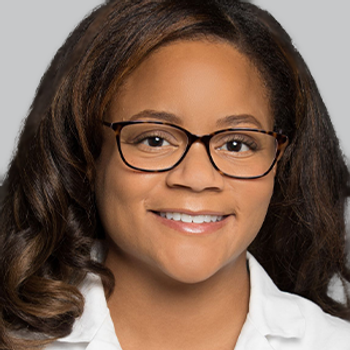
Newborn Screening for SMA: Clinical Recommendations and Considerations

In this discussion, experts provide key considerations in the process of newborn screening for SMA, noting the need for developing local protocols and understanding the limitations of screening infants early in life.
Episodes in this series

Spinal muscular atrophy (SMA) linked to chromosome 5q is an autosomal recessive disorder caused primarily by biallelic variants in the survival motor neuron 1 (SMN1) gene affecting approximately 1 in 15,000 live births. The first publication on SMA standards of care was developed in 2007 and later updated in 2018 by convening an International Conference of SMA experts. Through that, 2 publications were produced and globally distributed.
Years later, the field has significantly changed, with 3 new SMN-enhancing treatments—nusinersen (Spinraza®, Biogen), onasemnogene abeparvovec-xioi (Zolgensma®, Novartis), and risdiplam (Evrysdi®, Genentech)—at clinicians’ disposal. Ultimately, the approval of nusinersen and successful SMA newborn screening pilot programs helped facilitate implementation of SMA newborn screening, which resulted in dramatic change in SMA natural history.
The availability of disease-modifying therapies for 5q SMA and implementation of SMA newborn screening led the urgency to update the SMA best practice recommendations for diagnosis, which were
To better understand how these updates may impact SMA diagnosis and clinical care, NeurologyLive® convened a panel of experts who served as study authors on the recommendations. These included Mary Schroth, MD, FAAN, chief medical officer at Cure SMA and a pediatric pulmonologist; Kapil Arya, MD, a pediatric neurologist from Little Rock, Arkansas; Juan Francisco Vazquez Costa, MD, PhD, an adult neurologist who treats motor neuron diseases in Valencia, Spain.
Episode 3 of the series covers the critical steps and considerations in newborn screening for SMA. In this segment, the experts emphasize that a positive newborn screening result is not a definite diagnosis, but requires confirmatory testing at an SMA specialty center. In addition, the panel highlighted the importance of well-established protocols at these centers to ensure smooth diagnosis and treatment, even in cases of staff absence. Furthermore, the discussion also touches on the limitations of newborn screening, urging clinicians to remain vigilant for SMA symptoms, even in the cases of negative screening results.
Timeline of Discussion:
0:00 - 0:35 – Marco Meglio: Introduction of the topic, asking about key caveats and considerations clinicians should be aware of during the newborn screening process for SMA.
0:35 - 1:00 – Mary Schroth: Explanation of what happens when an infant is identified by newborn screening, emphasizing that a positive result is not a diagnosis and must be confirmed through additional testing.
1:00 - 2:15 – Juan Francisco Vazquez Costa: Importance of developing local protocols in referral centers to ensure smooth and timely genetic testing. Shares an example from Spain where protocols were needed when key staff were unavailable.
2:15 - 3:35 – Mary Schroth: Discussion of how referral centers should have policies to ensure immediate evaluation of infants identified through newborn screening, ideally within two to three days, and stresses the urgency of early assessment.
3:35 - 5:35 – Kapil Arya: Points out the responsibilities of primary care practitioners, especially pediatricians, and the importance of familiarity with local protocols for handling newborn screening results. He further elaborates on the role of pediatricians in handling urgent cases and maintaining clinical suspicion for SMA in patients who may not have been flagged by newborn screening.
Transcript edited for clarity.
Marco Meglio: What are some of the caveats and things that clinicians should be considering during the actual newborn screening process? What should they be aware of in terms of symptom presentation and ensuring an accurate diagnosis for these patients?
Mary Schroth, MD, FAAN: So, when an infant is identified by newborn screening, they're referred to an SMA specialty center for confirmatory testing. A positive SMA newborn screening result is not a diagnosis. It needs to be confirmed with a venous blood draw and repeat testing.
Juan Francisco Vazquez Costa, MD, PhD: I think it’s also very important for these referral centers to have developed local protocols to ensure the whole process runs smoothly, with no delays in genetic testing, and that families are well informed, etc. For example, in Spain, where I work, we’re currently in the pilot phase of newborn screening, so it’s not yet fully implemented in the health system. For many months, we hadn’t detected any cases, but then suddenly, during the neuro-pediatrician's vacation, two cases came up, and nobody knew what to do because she wasn’t there. So, all of these things need to be considered. What happens if the person in charge isn’t available? All this theory must be put into practice by establishing local protocols at each center.
Mary Schroth, MD, FAAN: I absolutely agree, Juan. That’s a great point. What are the expectations at the center? There should be policies and processes in place so that if the primary neuromuscular specialist isn’t available, someone else can step in. One of the points in our paper was that, after notification that an infant has been identified by newborn screening, those babies should be evaluated within two to three days of the test result being made available to the family, primary care physician, and specialist. Getting that child in for the initial evaluation and documenting their motor function—whether they show any evidence of symptoms—is critically important. I’ve had clinicians tell me they’ll see the baby within that short two-to-three-day window and then bring the baby back in a week, only to find that the baby has lost the ability to move their legs as well as they had previously. So it’s essential that initial evaluation happens urgently, with processes in place when that call comes from either the primary care physician or the newborn screening lab.
Kapil Arya, MD: Great points about the responsibilities of the referral center. But I’ll add two points for primary care practitioners, especially pediatricians, who might be the first to receive the diagnosis information from state health authorities regarding newborn screening. First, pediatricians should be very familiar with local protocols. In most health systems, certainly in Arkansas, there are published guidelines sent out to primary care practitioners about what to do if they get a newborn screening result for SMA, similar to other screenings, like for thyroid. They should be aware of the exact steps to follow. Second, if any lab draws need to be done, it must be handled urgently rather than pushed aside. And third, in that small percentage Mary mentioned, where children aren't picked up by newborn screening, clinical sense and examination skills must remain sharp. Practitioners should maintain a high index of suspicion when a parent brings in a child who’s not progressing in gross motor milestones, has low tone, or shows fasciculations. So yes, knowing what to do when the screening is positive is crucial, but we also can’t forget to keep an eye out for SMA in children who don’t have a positive newborn screening result.
Newsletter
Keep your finger on the pulse of neurology—subscribe to NeurologyLive for expert interviews, new data, and breakthrough treatment updates.










































